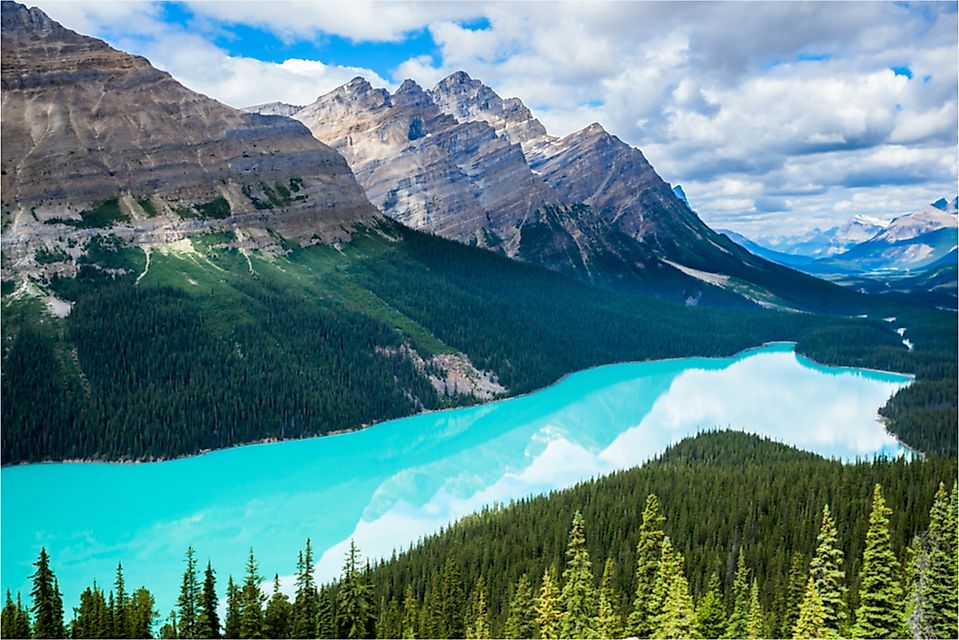What Is Limnology?

The term limnology is derived from the Greek word "limne," which means lake or pond. Limnology is the study of inland waters, which includes streams, lakes, rivers, wetlands, and reservoirs. Limnology is a division of environmental science or ecology, and covers the geological, chemical, biological, and physical attributes, among others, of inland waters, which may be man-made or natural, saline and fresh, and standing or running water. Limnology is related to hydrobiology and aqua ecology, which focuses on aquatic organisms. Landscape limnology, a branch of limnology, studies the conservation and management of marine ecosystems from a landscape perspective.
History of Limnology
Swiss scientist Francois-Alphonse Forel is considered the founder of limnology, and his observations inspired numerous scientists, including botanist Einar Naumann and zoologist August Thienemann, who formed the International Society of Limnology (ISL) in 1922. Forel began questioning and observing nature at age 13, and his earliest studies considered the relationship between the biological, physical and chemical properties of Lake Geneva. Forel coined the term limnology during the 19th century in his monograph entitled Le Leman. He defined limnology as the oceanography of the lakes, but expanded to include the study of inland waters. Limnology is an integrative discipline in which biology, physics, and chemistry interact, thus making it possible to understand the ecosystem in a more comprehensive manner.
Physical Properties of the Aquatic Ecosystem
The combination of waves, currents, and heat, among other seasonal distributions of environmental conditions, helps identify the physical properties of the marine system. The quantitative analysis of the water body depends on different features, like wetlands, streams, rivers, and estuaries, and the structure of the environment surrounding the water body. The formation process of lakes helps classify water bodies, and water depths define the zones within a lake. The velocity of water and the geology of the surrounding area determine the morphometry system of streams and rivers. Estuaries also fall within the study of limnology. Wetlands vary in pattern, size, and shape, however all typical wetland types, such as swamps, bogs, and marshes, fluctuate between being dry, fresh water and shallow.
Light Integration
Light zonation theory considers how sunlight penetration into water affects the structure of a body of water. Light zones define various productivity levels within the ecosystem, like a lake. The euphotic or photic zone refers to the depth of the water column that light can penetrate and where plants can grow. The remainder of the column of water that does not receive sufficient sunlight for plant growth is known as the aphotic zone. The albedo measures the amount of electromagnetic that is reflected when sunlight hits the water surface.
Thermal Stratification
Thermal stratification, also referred to as thermal zonation, is a method of grouping water body layers within the aquatic ecosystem based on the temperature variation on these segments. Heating reduces exponentially with water column depth, and therefore water is warmer on the surface and becomes progressively cooler as depth increases. The thermal stratification of a water body has three sections. Epilimnion is the upper layer, which is close to the water surface, is the warmer layer which experiences wind circulation. The second layer of the water column, which experiences a rapid decline in temperature, is called thermocline. The bottom layer, which is uniformly cold, is the hypolimnion. During summer the upper layer of a water body is always warmer than the bottom layer. However, during winter the temperature of the epilimnion layer falls below 4 degrees Celsius, which is equal to the temperature of the lower layer. The top layer expands, becomes lighter, and then freezes.
Chemical Properties of an Aquatic Ecosystem
In a natural environment, soil erosion, evaporation, soil type and bedrock, precipitation and sedimentation influences the chemical composition of water. All water bodies have a unique balance of inorganic and organic compounds and elements.
Water Quality
Although hundreds of variables are considered to affect the quality of water of lakes, only a few variables have been confirmed to be of great importance to the health of the aquatic ecosystem. There are numerous biological activities which affect the concentration of dissolved gas and nutrient, but human activity is the only major contributor to the quality of water.
Oxygen
Dissolved oxygen is responsible for numerous chemical and biological reactions which play a significant role in the functioning of the aquatic ecosystem. Various natural processes affect the oxygen concentration in the ecosystem, including photosynthesis and respiration. The oxygen profile is affected by wind on the water's surface, respiration, photosynthesis and organic matter, which means that oxygen concentration decreases just like the temperature profile. The profile uses the same principle as light penetration and thermal stratification. Photosynthesis and sunlight control the concentration of dissolved oxygen, and is the determinant of how much photosynthesis can occur within the three water layers where light is available. The concentration of dissolved oxygen declines the depth of a body of water increases. Aquatic life absorbs dissolved oxygen, while expelling carbon dioxide.
Phosphorus and nitrogen are vital nutrients in the aquatic system. Although most studies focus on ammonia, nitrite, and nitrate as the sources of nitrogen in the water, nitrogen exists in gas form in the aquatic system. Nitrogen concentration is usually high in fall and winter months, and lower in spring and summer months. Due to the small concentration of phosphorus in water bodies, phosphorus is considered to be the limiting factor in the growth rate of phytoplankton. Dissolved phosphorus has a distinctive ecosystem cycle.
Biological Properties of an Aquatic Ecosystem
Limnology classifies all water bodies according to their trophic state index. The trophic state index is determined by the quantities of phosphorus and nitrogen, among other nutrients. Eutrophic lakes have high nutrient levels and are characterized by high productivity. Oligotrophic lakes have low nutrient levels and are characterized by low primary production. Dystrophic lakes have yellow-brown or tea-colored water and high levels of humic-matter. Eutrophication of a lake can result in increased production of algae.











